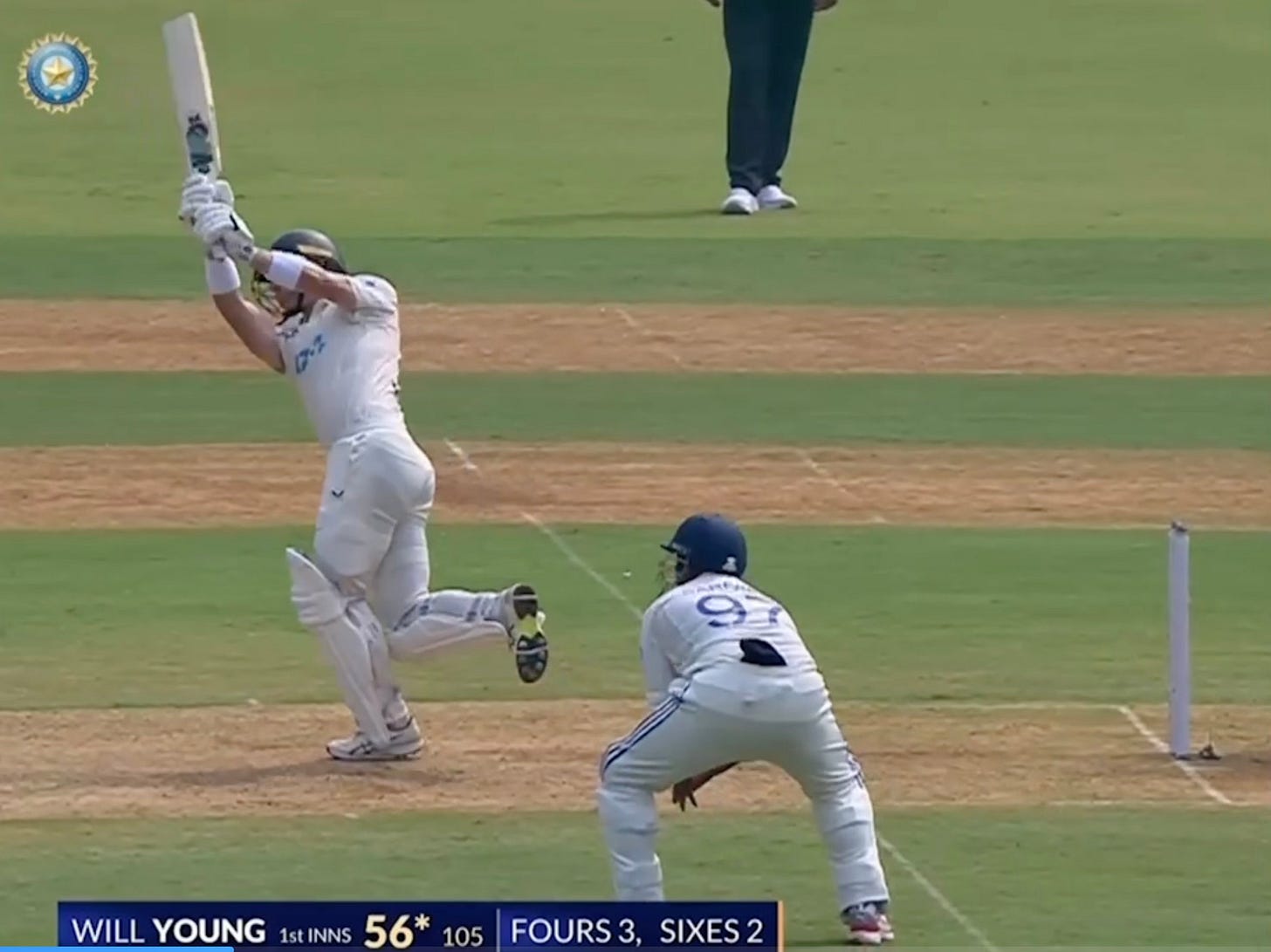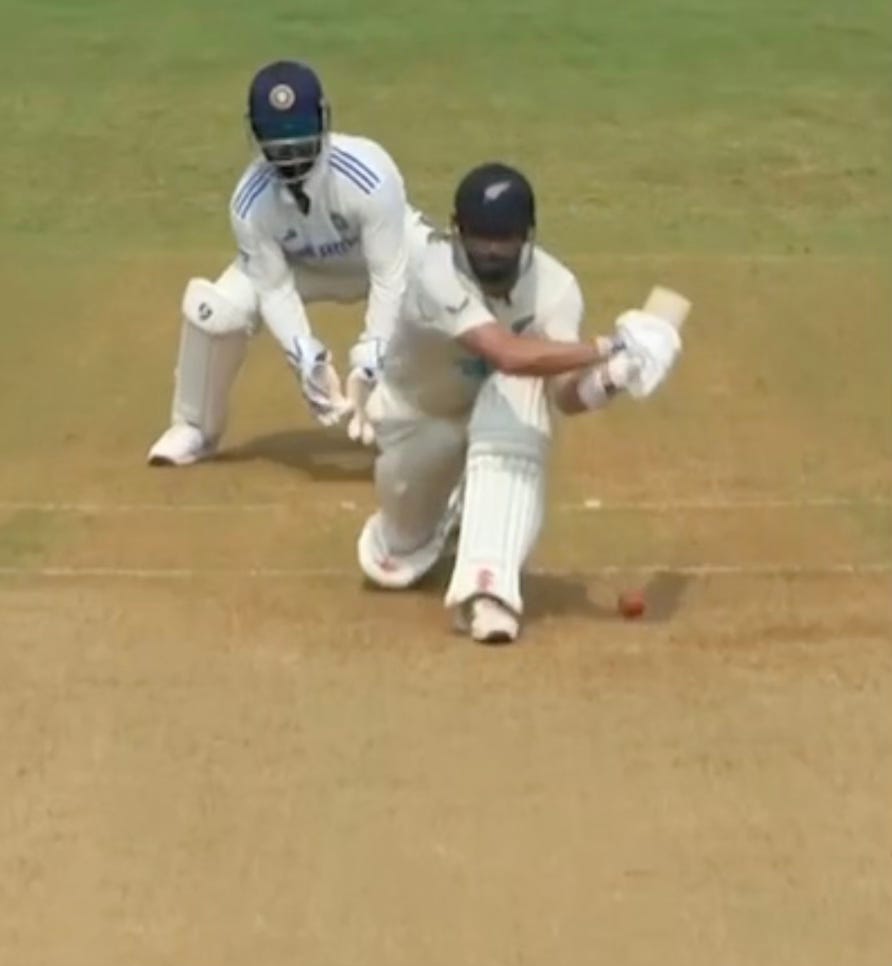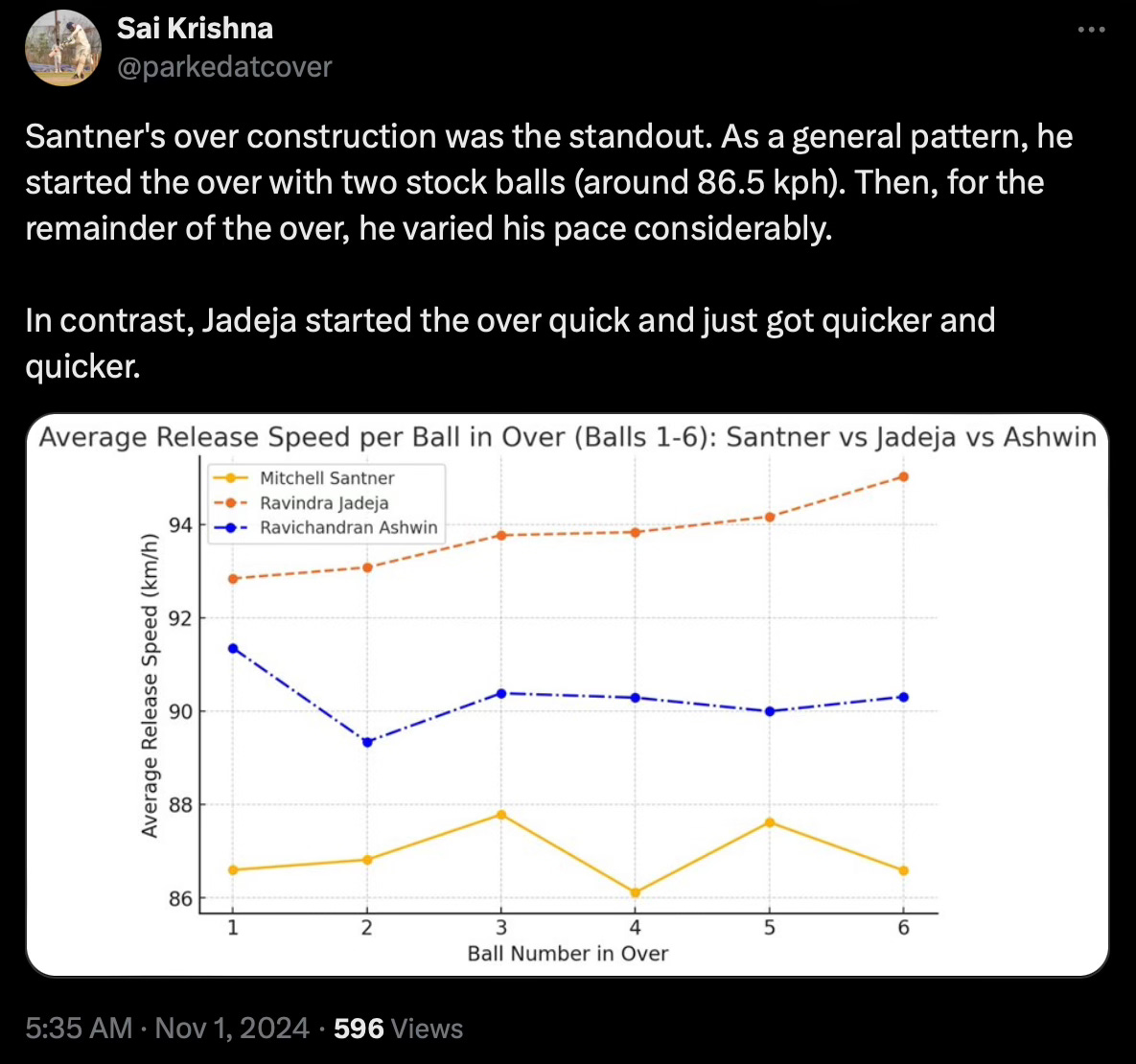Kiwis enter unchartered territory with a memorable Mumbai win
The first-ever whitewash at home abruptly ends an unprecedented 18-series winning streak for the Indian team.
Going into this test series, there were predictions of a 3-0 result. New Zealand had won 2 matches in 36 attempts in India in their entire test cricket history. They were facing the tail-end of India’s greatest generation. Was anyone in their right mind betting on Kiwis coming out on top? Probably not.
Those predictions weren’t wrong but how did New Zealand end up on the right side?
New Zealand’s preparation, excellent execution of the basics, and some luck
The tour started with rain and cloudy conditions in Bangalore, naturally suited to New Zealand’s pace attack. On top of that, the visitors lost an important toss. Both captains wanted to bat first, but India ended up batting first and made a record low (at home) of just 46 all out. It was the perfect mix of favorable conditions, consistent bowling, and some outstanding catching that left India far too behind in the game.
The conditions were much better to bat on after the 2nd session, and New Zealand made the most of those to put 400 on the board. Indian spinners, Ashwin in particular, were certainly off-color but all the work Rachin Ravindra put in before the subcontinent tour also paid rich dividends. India fought hard led by Pant and Sarfaraz’s brilliance, but there was just too much to do after that first session.
In the next two tests, India brought back Washington Sundar to use his height and pace on spinning tracks. While Axar Patel might feel a little let down, Sundar held his own. Unfortunately for India, they ended up losing both tosses and had to bat last in tougher conditions. The highlight from a batting standpoint was the brilliant execution of basics to deal with spin on turning tracks.
As highlighted by Cricviz, the key to succeeding versus spin in test cricket is to intercept the ball early or late, and not meet it in the middle/danger zone. Over the years, there have been plenty of non-subcontinental batters that sit on the back foot far too often. Then, they rely heavily on the sweep to counter the length of test spinners.
Will Young, the well-deserved Player of the Series, swept well but he also stepped down or went deep in the crease to minimize the balls played in the danger zone as the photos above show. This was certainly the highlight of his 19-test career, but he wasn’t the only one in the Kiwis dressing room using these tactics. Daryl Mitchell stepped out often as well, and he made a point to try and play the sweep when the ball wasn’t in line with the stumps to reduce the chances of LBW.
In addition to the batting smarts, New Zealand’s spinners also made the most of the conditions. In the 2nd test, Mitchell Santner varied his pace and guile superbly to claim 13 wickets and seal a historic series win for New Zealand. Having already gone where no other Kiwi team of the past had, Ajaz Patel took 11 wickets at the Wankhede to add to the 14 at this ground on the previous tour to become the 1st team ever to whitewash India at home in 3-match (or more) match series.
India’s one-too-many slip-ups and the need for a transition plan
When India lost the 1st test in Bangalore - it was their 3rd test match loss at home in less than 2 years. There were signs that the end of their greatest run was around the corner. But such had been India’s dominance at home, that most fans believed India would wallop back and claim the series.
Life’s come a full circle for Indian fans.
During India’s previous test series defect (v/s England in 2012), a young R Ashwin averaged more than 40 with the ball. Nearly 12 years later, he finished this series with just 9 wickets conceding over 360 runs. Then, India’s legendary batter Sachin Tendulkar averaged a meager 19 with Ashwin scoring twice as many runs as him. Against New Zealand in 2024, Virat Kohli and Rohit Sharma averaged just 15 and Washington Sundar scored nearly as many runs in 2 fewer innings.
There will be murmurs about how this team can’t play spin. Those nostalgic opinions ignore the fact that the Indian team of old (Tendulkar/Dravid/VVS/Sehwag) also had off days. Just in Mumbai, they were once bowled out for 104 to Michael Clarke’s 6/9 and then again for 100 to Shaun Udal a couple of years later. They also miss how the pitches have been way more bowler-friendly, and how DRS makes batting against spin tougher now. But what’s clear is that the time to transition is closer than most people realize.
Despite the continued form of Shubman Gill, Yashavi Jaiswal, Rishabh Pant, and Akash Deep, Washington Sundar’s strong return, there were far too many unforced errors. During the Bangalore test, despite the 46 in the 1st innings, the hosts had the Kiwis in reply at 233/7. Rachin Ravindran was batting beautifully, but even Tim Southee managed 65 to allow them another 170 runs.
On the 1st day of the 3rd test, having set themselves in a solid position to finish about 160 runs behind with 9 wickets in hand, India lost 3 crucial wickets, including Virat Kohli’s run out, to hand Kiwis the advantage back. If not for that harakiri, India would have ended up with a lead of 60-75 runs and the target in the 4th innings would have been a lot more manageable.
New Zealand were relentless and kept doing the basics right. Apart from the odd dropped catch, they did not allow India to breathe freely. With each Indian slip-up, the uncharted height seemed more doable for the visitors.
That’s how the series was won.







